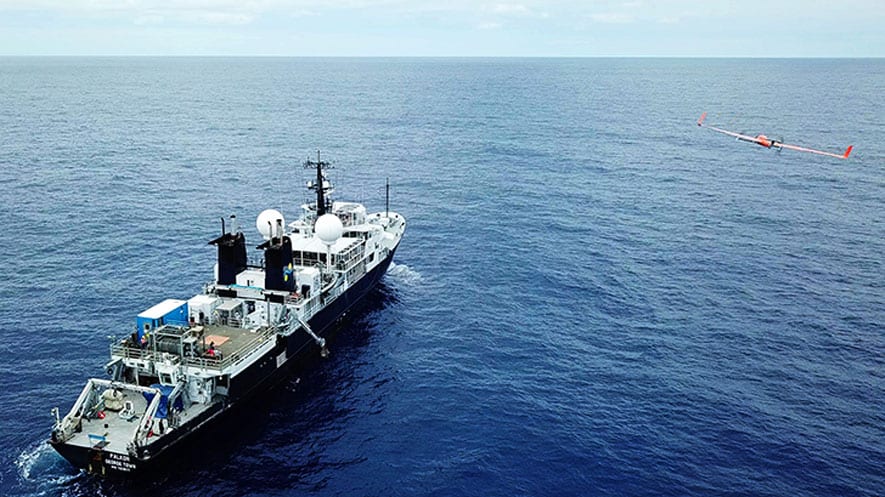
News
Gas Smelling Drone Helps Monitor Ocean
Gas Smelling Drone Helps Monitor Ocean
In a unique attempt to study oceanic environs, a highly specialized drone by the name The Edge developed by a Santa Monica-based drone company FlightWave, has been working in tandem with a recent Schmidt Ocean Institute voyage to gather crucial data on the ocean’s changing temperatures and related impact on marine life.
The Schmidt Ocean Institute was established in 2009 by the former CEO of Google, Eric Schmidt, and his wife Wendy in order to support oceanographic research and technology development.
The autonomous drone Edge assisting the institute is equipped with a thermometer, cameras and a nose that can smell, and spent most of the month of June flying over the Pacific Ocean.
The Edge was accompanied by three robotic submarines and the Institute’s research ship R/V Falkor to conduct this data gathering operation.
FlightWave co-founder and CTO Trent Lukaczyk said that scientists were still analyzing the massive amounts of data collected.
These tests successfully demonstrated how conditions under the sea, along its surface and in the air can be measured successfully by autonomous vehicles working together simultaneously.
The technologies used in the demonstration will be crucial to tracking climate change, ocean acidification, fishing impacts, pollution, waste, loss of habitat and more.
The team of scientists focused on the North Pacific Subtropical front, about 1,000 nautical miles off the Southern California coast where an underwater boundary formed by the confluence of cold, fresh water from the north and salty water from the south.
According to the Schmidt Ocean Institute, this extensive mission involved robots travelling over 1,000 nautical miles for about 500 hours, and The Edge being flown two dozen times, totalling 10 hours for nearly a month’s duration.
Lukaczyk explained that the gas-smelling nose attachment on the Edge was a NASA prototype sensor for detecting Dimethyl Sulfide, or DMS, a gas emitted by dying phytoplankton.
Clouds of DMS form over the water as the gas makes its way into the atmosphere, cooling the ocean’s temperature. Lukaczyk says only two of these sensors exist and both were used in the mission. “It’s really the canary in the coal mine,” Lukaczyk said. “You think of a drone as a camera these days, but gas sensors, are the future.”
“I think it is essential for humankind to understand the big picture because, in the end, we are talking about the life-support system for the Earth,” said lead scientist Dr. Joao Borges de Sousa.
“The oceans are an important component of that life-support system and they are not as tremendously huge as people tend to assume. In fact, if all the oceans’ water were put into a bubble, most of us would be stunned to see how impressively small it looks when compared to the Earth’s size. And, yet, science still lacks the technology and tools to study the oceans overall health and functioning.”
Studying gases emitted from phytoplankton help scientists assess the health of the entire food chain Lukaczyk elaborated.

Source: Flightwave Edge




















